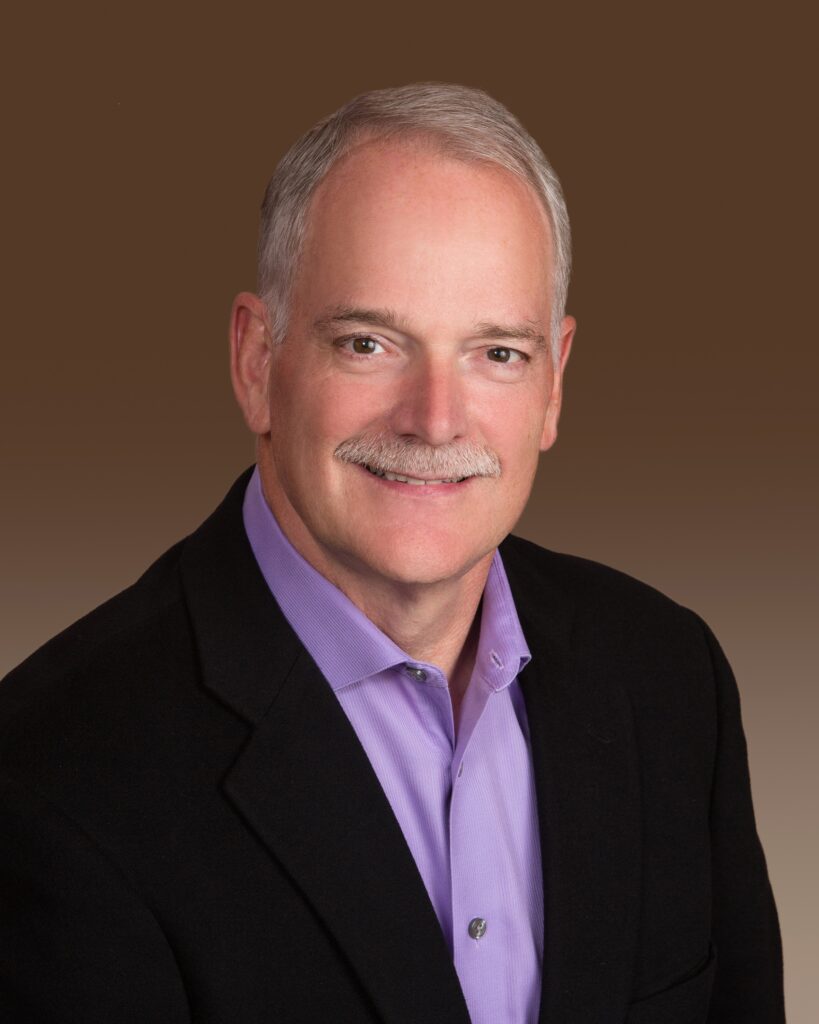Listen to this interview on Spotify
Below you can read the transcript and/or watch on YouTube:
In this video interview: Bruebaker built one of the strongest and largest funds in the United States, which became one of the few funds to show a profit during the pandemic’s challenging 2022, and is now headed by his mentee, Allyson Tucker. Here’s what he had to get right when building the fund as it became a direct investor in real estate and exponentially increased its private investments. This video interview took place at the Markets Group Pacific Northwest Institutional Forum shortly after Bruebaker was given the Lifetime Achievement Award.
Gary Bruebaker, Chief Investment Officer at Washington State Investment Board (WSIB), retired quietly during the pandemic, after dedicating his life to the industry. When Markets Group celebrated his career at our Pacific Northwest Institutional Forum in Seattle, those he mentored came out to Seattle from two of the largest funds in the United States. Marcie Frost, now the CEO of CalPERS and Allyson Tucker, now CIO of WSIB and others such as Mike Mueller of Oregon and Theresa Whitmarsh, former WSIB CEO, spoke about how he built the foundations of WSIB by planning ahead and laying the groundwork with its board. We caught up with Bruebaker following his Lifetime Achievement Award ceremony, and garnered some good advice for other allocators. The following is the video transcript and video of that interview below.
Please Click Here to Register Now!
Christine Giordano: I am here with Gary
Brubaker, the former CIO of Washington State Retirement. Today we got to honor
Gary with a Lifetime Achievement Award at our Investors Forum. Gary was peer
nominated by CIOs for both the Hall of Fame Award and the Lifetime Achievement
Award. Quite a crowd came from across the United States to honor him. CIOs from
Washington State, from Idaho, CEO of CalPERS. It just was a wonderful ceremony.
I want to first start by congratulating you, Gary, for a lifetime of stellar
achievements for Washington and Oregon.
Gary Brubaker: Thank
you very much. I really appreciate it. It was just so nice having everyone
here. They said very nice things, which makes it easier too, right? It was just
so good to reconnect with everyone. I haven’t seen Marcy in quite a while. I
appreciate it very much.
Giordano: It
was one of the more moving ceremonies that I’ve seen. The thing that kept
coming up is your approach, your long-term strategic approach, how effective
you were at putting together a plan, scoring the high returns, convincing the
board, and actually doing what needed to be done for the sake of the plan. You
brought private equity to Washington State, you brought direct real estate
investing for the sake of the plan. Let me just ask, how did you actually
strategize to put things into effect for the near term as well as the long-term
future? How did that happen?
Bruebaker: It’s
really part of a major framework that I put in place of annual planning. We
started out by doing annual planning with just private equity. What we did was
just, what funds are likely to come back this next year? Because before that
what we were doing was just if a fund would come back, we would say,
“Well, let’s invest in this fund.” There was really no long-term view
then in terms of, but where are we taking this portfolio? Are we going to be
overweight in areas we don’t want to be and underweight in areas we’d rather
have more exposure to?
We started the annual planning in private equity. At first it was just
staff-driven. Then, eventually we got to where we presented it to the board.
Then we got to where we presented it to the board, and they approved it. Then
we got to where they were actually in on the planning. Then once we did that,
then we expanded it to private real estate. Then we expanded it to public
equity. For instance, I’ll give you an example with private equity. It wasn’t
just, what funds do we think are going to come back, and, importantly, what
funds are we going to target? Where do we have openings within the portfolio
that we want to get some exposure to?
We would put all of those down. That would be our tactical plan of the
one year. At the same time we would then expand out and plan for the next five
years. You have somewhat of a view what funds are going to be coming back in
each of the next years, the next five years. It also forced us to look at what
about those places we want exposure we don’t have. That made us be more forward
thinking. We did that with all the asset classes. I think it made the most
difference in the private markets. Because prior to that, we were just simply
investment takers. An investment would come up, we’d say, “Do we want to
do it or not?” Rather than actually proactively planning the exposure we
were looking for.
Giordano: You
would plan that exposure a year in advance. You’d put that in front of the
board so that you’d have the opportunity to act when you saw fit?
Bruebaker: We
did. We also did that for longer periods of time. If you want to get an
exposure to the type of fund you don’t have today, you can’t always just go out
and say, “Oh, I’m going to go down the corner and find one.”
Sometimes it takes more than a year to find that exposure you’re looking for.
That forced us to have that longer period of time. It forced us to find more of
those. Another thing that it did was it forced discipline and focus for the
board.
Sometimes the board got a little overzealous and said, “Well, if
you like them at $500 million, we like them at $750 million.” That
happened quite frequently. One time we recommended $750 million, they did $1.5
billion. Once we implemented the plans and got them to approve the plans, the
very first time they ever started to do that they wanted to allocate more
money, I said, “Time out. Can we please go in an executive session so the
board can identify which managers we’re not going to invest with in order to
give them this capital?”
As you know, we’ve put together a five-year plan of the capital we’re
going to put to work, and it did not anticipate this additional investment.
They didn’t do that, and they never again increased the dollar amount in an
open meeting while we were evaluating the investment. It put a discipline, I
think, on both staff and on the board.
Giordano: Makes
a lot of sense. Can I also ask you, you also started the private equity
program. What was key to getting that right?
Bruebaker: They
had a private equity program when I got there. They had an allocation of 13% to
private equity, 7% to private real estate. By the time I left, they had 50%. I
didn’t create the program, but I helped the board grow the program. We put
together very strategic moves we needed to do in order to increase the
allocation. That included increasing staff size, so we began doing that.
Cultivating relationships, so we reached out to general partners.
Fortunately, we already had a really good reputation in the
marketplace. Even managers we hadn’t invested with were interested in having us
as LPs, so that helped a lot. To move from, what, 20% to 50% of the portfolio
to private markets was a fairly huge move, but it was also over 19 years. It
was really that planning. Without the annual planning process, I don’t think we
could have successfully done it. We could have done it, but it wouldn’t have
been as successful as it ended up being.
Giordano: How
did all of this happen around the recession, around the great financial crisis?
How did you pull the fund out of that and back to success?
Bruebaker: Clearly,
the funds ended up being better than they looked like they were going to be
while we were going through the great recession. That helped. There were some
funds that were selling private equity in the secondary marketplace, and we
never even considered it. In fact, we bought some of those positions. Anytime
you have something go wrong, you need to be careful not to– The industry likes
reacting to noise. They like saying, okay, well, something’s wrong, so now
we’re going to completely redo what we’re doing.
You don’t want to do that, but when the market moves against you, like
it did in ’07 and ’08, they’re very challenging times. They’re challenging
because you need to dissect the difference between something you should pay
attention to see whether you need to make changes on the market, or are they
things that you just need to double down on your conviction. Most of ours, we
doubled down on our conviction. It worked very well. During that crisis, we did
that in both public equity and private equity. Real estate, we actually had
more control over. We managed through that one even better.
Giordano: For
allocators who have never experienced a down market in their career, perhaps,
what’s your advice?
Bruebaker: Don’t
overreact. You need to make sure that your governing body will give you the
time horizon you need, but mostly you need to communicate. You need to
over-communicate with your board. You need to over-communicate with your
stakeholders to let them know, we expect this to happen in down markets. We
have many models that showed this could happen, and this is the time that we
need to reinforce our conviction, because just like the markets came down, the
market is going to go back up.
Unfortunately, whenever investors are in a market, whether the market’s
always going up, you think it’s always going to. The same thing’s true even
more so when the market’s going down. When the market’s going down, you think,
oh, they’re never going to come back, and yet, so far, they always have. You
want to be careful and manage through it thoughtfully, but you don’t want to
overreact, and you really need to double down on your conviction.
Giordano: Theresa
Whitmarsh, your old boss, your old CEO, who worked with you for years, asked
you, what do you want your legacy to be? Could you repeat your answer?
Bruebaker: Certainly.
I was raised by a single mother along with two sisters. My mom was an
administrative assistant with the state of Oregon. She worked her way up to
being head of central payroll. I’ve always had a tremendous amount of love and
respect for my mother and how hard she worked for us and all the sacrifices she
made for us. When I manage public employees’ pensions, I just realize that
there’s a whole bunch of people just like my mother that also work very hard
for what they’re doing to support their families.
What kind of retirement management system do they deserve? I believe
they deserve the best. The excess earnings we can get, is 50 cents a taxpayer
doesn’t have to pay and 50 cents a teacher or firefighter or police officer
doesn’t have to pay. We work very hard and take it very seriously to do
everything we can to maximize the return at a prudent level of risk. Our mantra
is to maximize return at a prudent level of risk for the exclusive benefit of
the fund beneficiaries. I went to work every day, and that’s what I did.
Giordano: Congratulations,
Gary Brubaker.
Bruebaker: Thank
you very much. This was a great conference you guys put on. I really enjoyed
being part of it.
Giordano: We’re
honored to have you as part of it. Thank you.












